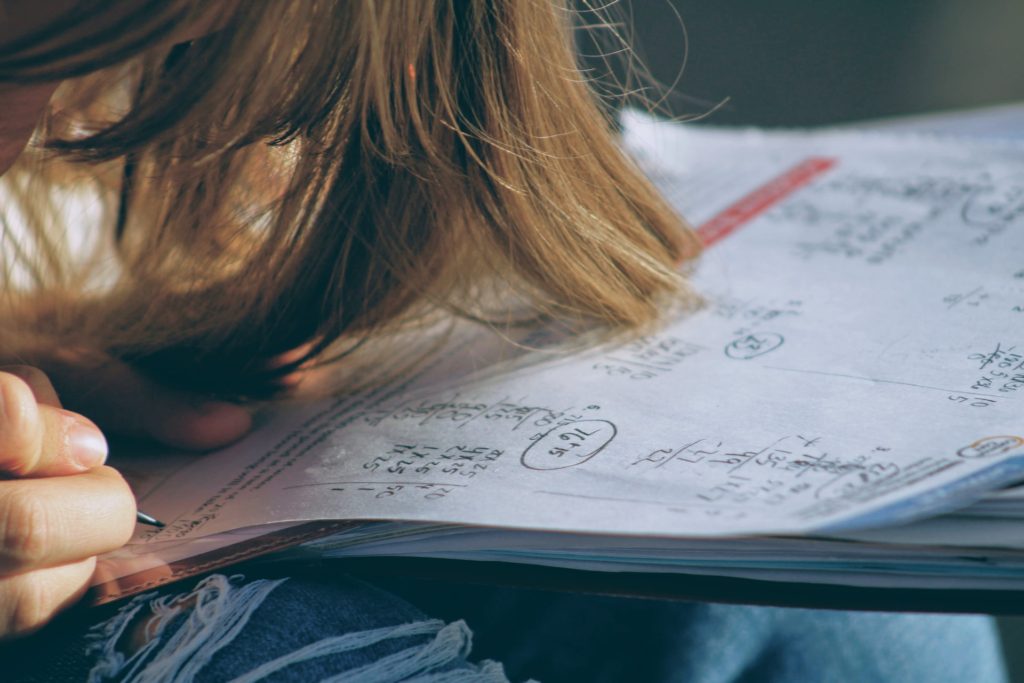Table of Contents
This guide to helping students with dyscalculia is designed with the principles of Universal Design, which says that lessons can be built in a way that works for the brains of all students. As a disclaimer, however, none of the information in this guide can supersede the personal relationship and rapport built over the months between teacher and student.
Students with learning difficulties are not all alike and not all strategies will work for all students, so teachers should continue their good practice of getting to know the needs, strengths and weaknesses of each of their students with or without a diagnosed learning difficulty. These tips are based on the fundamentals of how the human brain works, however, and so many students will respond well to these suggestions, perhaps helping students with and without a learning difficulty.
What is Dyscalculia?
Dyscalculia is defined as a “difficulty acquiring basic arithmetic skills that is not explained by low intelligence or inadequate schooling.” (Kaufmann, and Aster) It is, in effect, a student who scores significantly lower on tests measuring their ability to understand and solve mathematics problems compared with other tests without a clear cause such as brain damage.
Students with Dyscalculia often score well in many other areas and simply have an area of significant difficulty with math due to how their brain personally processes information. Research into the brain based causes of dyscalculia finds disruptions in the intraparietal sulcus, a part of the brain with a vast array of functions seemingly disconnected from mathematics including executive function and muscle control. (Bugden, and Ansari)
Despite these differences, students with Dyscalculia are fully capable of learning how to do functional and even academic math with supportive teachers and specifically crafted overcoming strategies. Dyscalculia is a very broad diagnosis and it may present in many different ways in different individuals.
Identifying Students with Dyscalculia in the Classroom
Students diagnosed with Dyscalculia are often described by their teachers as…
- Having trouble doing simple math.
- Relying on their fingers or other physical objects to count.
- Understanding word problems better than problems written out as equations or formulas.
- Understanding math concepts better when physically demonstrated.
5 Targeted Interventions for Students with Dyscalculia
- Use physical objects to demonstrate abstract math in concrete ways.

While it may be difficult to get students with dyscalculia to understand traditional math problems, they often respond much better when using physical objects to explain concepts rather than formulas written out with numbers and letters.
Younger students can learn simple arithmetic using marbles, pencils, or any other easy to collect classroom objects. Older students can learn through projects where they have to use the concepts they’re learning to construct things in the classroom or even use simulations online.
While not physical objects, simulations of mathematics concepts will also help students with dyscalculia to understand the concepts in another way. Not only can they see what is going on, something research shows is beneficial for all students, but they can manipulate the simulation to see how it changes. These pathways will help students with dyscalculia use the stronger parts of their brain to support where they are weaker.
- Give students with dyscalculia word problems to test their knowledge
Another way to format problems that might hit on the student’s strengths is to use word problems. Students that are doing stronger in their English or History classes might benefit from being able to read out an explanation of what is going on rather than just having a formula with numbers doing things they don’t understand. Even just writing out a formula in words can help students to understand what is going on and see the concept beyond the numbers on the page.
- Play games involving math to bolster fundamentals in a fun way.
There are countless simple math games for teachers to use depending on the age group they are teaching and the concepts they hope the students can learn. These games are great for increasing motivation as well as being yet another format to teach math concepts. Getting students to use what they’ve learned in an active and competitive game can help those who may feel like giving up to get excited again and learn more.
- Don’t focus on efficient solutions, focus on effective solutions.
Math often has a best way to solve most types of problems. Students with dyscalculia often have trouble with these methods, despite their efficient nature. For example, when teaching about adding and subtracting integers, teachers often have students think of a number line and have rules about when to go in each direction. While this system might make it very clear and easy for some students with dyscalculia, others may not get this explanation.
Another way to think about adding and subtracting integers is to make it into a budget game. Positive numbers can represent earnings and negative numbers can be charges. When adding a positive number, tell students to think of it as receiving a paycheck while subtracting is their wages being garnished. For negative numbers it can be charges to their account. Adding a negative number would be adding a charge to their account, lowering their account balance, while subtracting a negative number can be thought of as receiving a refund.
While this money based game might be very difficult for students with some types of dyscalculia, it may help others. Helping students with dyscalculia is all about finding out what is difficult for them and helping them see it in a different format. Additionally, you could use real coins to make use of the first tip making it not only a physical object, but in a context students will be more familiar with.

This approach has two benefits for students with dyscalculia and one that benefits the whole class. Firstly, this method helps bring it out of the “math world” and into something the students can understand from their real life experiences. This can help students who struggle with math as, even though math is still obviously being used, they are able to think about it in a different context that they are more comfortable with.
The second benefit that all students gain is that this takes the abstract concept of integers and helps the students understand why math is useful, and prepares them to use their math abilities in a context where they will actually use them in the future. Since solid research states that learning is situated in the context it is learned and transfer does not often naturally occur, this method may be better for all students and not just those diagnosed with dyscalculia. (Brown, Collins, & Duguid) Rather than math just being a logic puzzle to “get students thinking”, this method gives students real life skills that will transfer into making them more capable adults.
- Make math a more regular habit for students with dyscalculia.
While math may be difficult for students diagnosed with dyscalculia, this does not mean they are incapable of learning it! While a student with dyscalculia may rarely be doing complex calculus, they will need math in their lives just like other students. Teachers should focus on giving students functional math skills that will make their lives easier and give them the confidence to work in more fields.
Making math a regular fixture in their work week will not only help them develop their math abilities and help them pass their required courses, but it will also help these students to develop resilience. Learning doesn’t always come easily and oftentimes it is the students that have had to work very hard for their education that value it the most and go on to find the most success with learning in the future when they no longer have the luxury of a teacher.
While a single math teacher might not turn their student with dyscalculia into someone capable of doing higher level mathematics, they do have the ability to empower their students to overcome challenges, not give up, and better themselves no matter the hurdles they face.
Want more like this? Make Lab to Class a part of your weekly professional development schedule by subscribing to updates below.
References
Brown, J., Collins, A., & Duguid, P. (1989). Situated Cognition and the Culture of Learning. Educational Researcher, 18(1), 32. http://dx.doi.org/10.2307/1176008
Bugden, Stephanie, and Daniel Ansari. “When Your Brain Cannot Do 2 + 2: A Case Of Developmental Dyscalculia”. Frontiers For Young Minds, vol 2, 2014. Frontiers Media SA, doi:10.3389/frym.2014.00008.
Pandey, Sudha & Agarwal, Shalini,. (2014). Dyscalculia: A Specific Learning Disability Among Children. Scientific and Technical Information Processing. 2. 912-918.




